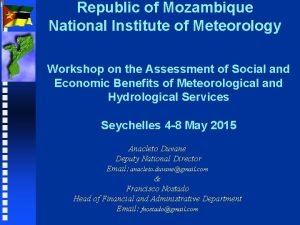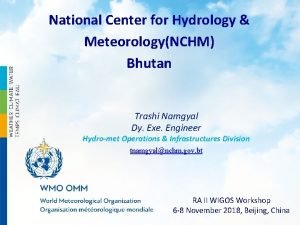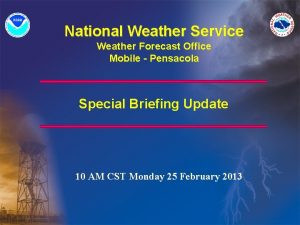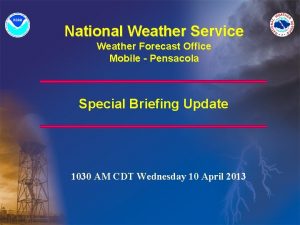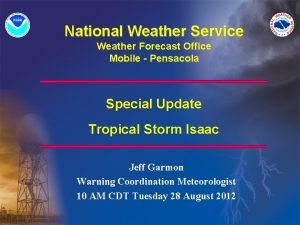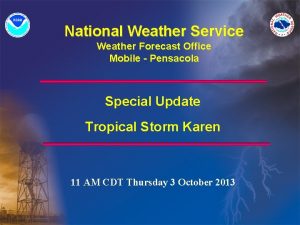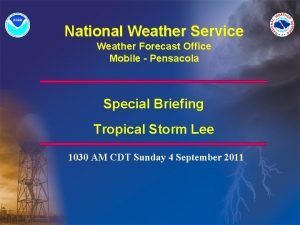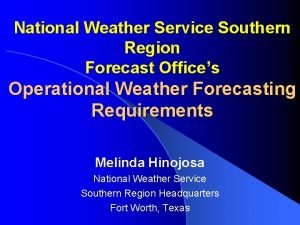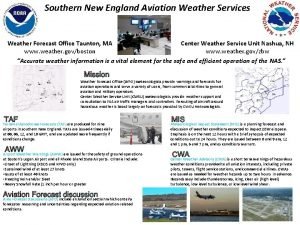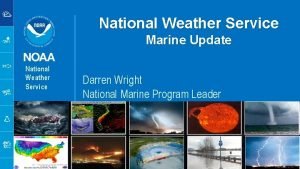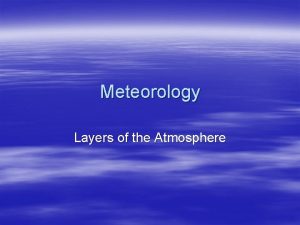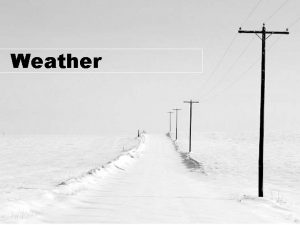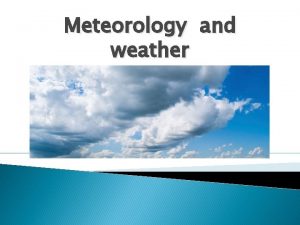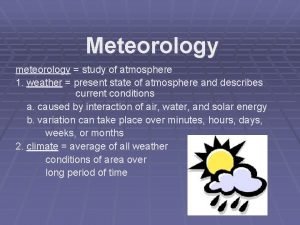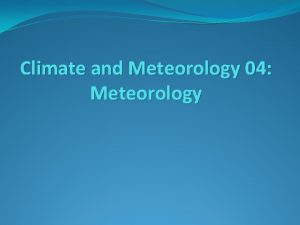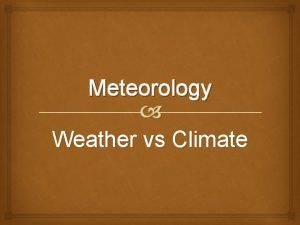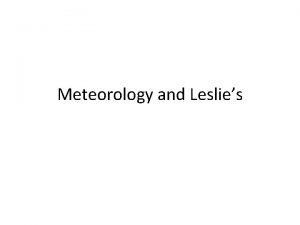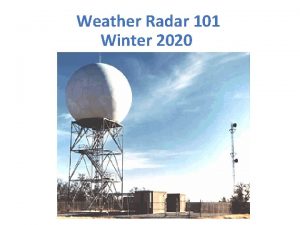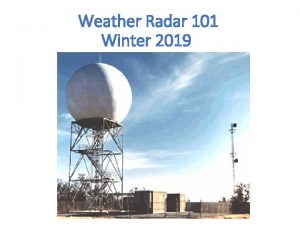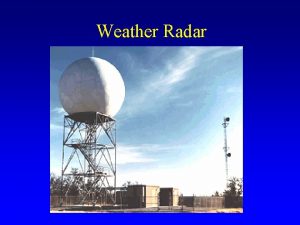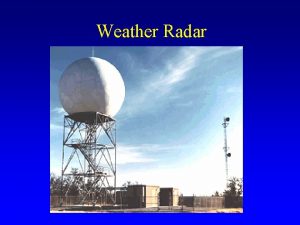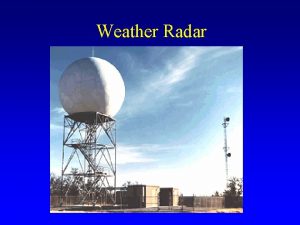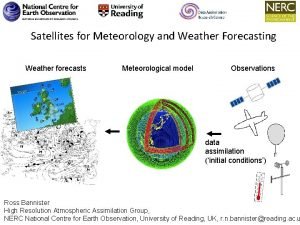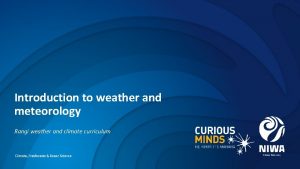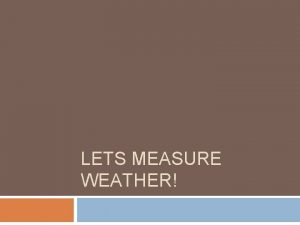Meteorology 101 Weather for Teachers National Weather Service




































- Slides: 36

Meteorology 101 Weather for Teachers National Weather Service Part 2

Jet Stream

Jet Stream

Chasing Rabbits #4

Chasing Rabbits #4 A desert is defined as any region where the annual rainfall is LESS than 10 inches. Temperature is irrelevant. Annual Rainfall <10” < 5”

Jet Stream What is the Jet Stream? The atmosphere’s response to where the temperature gradient is strongest (which is also where the greatest density change occurs). Is identified when and where wind speed is ≥ 50 kt (but can exceed 200 kt).

Jet Stream

Jet Stream American Airlines #180 January 11, 2019 791 mph Boeing 787 cruising speed is 587 mph

Elevation Jet Stream Does not occur at any one level but changes in elevation

Jet Stream

Elevation Jet Stream Warmer Air Cooler Air

Jet Stream The change in jet stream elevation imparts vertical motion in the atmosphere.

Jet Stream Inclement weather typically occurs between the trough and downstream ridge.

Jet Stream Fair weather typically occurs between the ridge and downstream trough.

Jet Stream Greatest rise in height is typically where surface low pressure is located.

Jet Stream Greatest decrease in height is typically where surface high pressure is located.

Jet Stream Greatest vertical motion of air impacts air pressure at the surface. Isobars are lines of equal pressure.

Surface Wind What direction does the wind blow around high- and low-pressure areas?

Surface Wind Let’s look at how the Coriolis effect impacts the winds direction.

Surface Wind Let’s look at how the Coriolis effect impacts the winds direction.

Surface Wind Let’s look at how the Coriolis effect impacts the winds direction.

Surface Wind Coriolis effect is balanced by the pressure gradient. Results in the geostrophic wind.

Surface Wind The wind flows along isobars (more or less)

Chasing Rabbits #5

Chasing Rabbits #5 How to find high- and low-pressure centers outdoors* 1. Face into the wind. 2. Hold your arms out from the side of your body. 3. Your left hand points to the center of High pressure. 4. Your right hand points to the center of Low pressure. * Not so much for the Seattle area.

Fronts Cold Front Cold (cooler) air replacing warm air.

Fronts

Fronts 3: 45 pm 80°F 4: 00 pm 40°F

Fronts Warm Front Warmer air replacing cold air.

Fronts Stationary Front Boundary between two air masses with no frontal movement.

Fronts Cold Fronts Cooler/Colder more dense air undercuts the warmer less dense air.

Fronts Cold Fronts Forceful rising of warm air helps create thunderstorms.

Fronts Warm Fronts Lighter, denser warm air moves faster than the retreating warm front causing it to rise.

Fronts Warm Fronts Clouds and rain develop “ahead” of warm front.

Back to the Future We return back to the beginning and complete the weather cycle.

Learn MORE at… Jet. Stream – An Online School for Weather www. weather. gov/jetstream A free resource with over 35 lesson plans and activities
 Meteorology 101
Meteorology 101 National institute of meteorology
National institute of meteorology National center for hydrology and meteorology
National center for hydrology and meteorology Kim kroll teachers pay teachers
Kim kroll teachers pay teachers National weather service forecast
National weather service forecast National weather service pensacola
National weather service pensacola Nws pensacola
Nws pensacola Nws mobile pensacola
Nws mobile pensacola National weather service pensacola
National weather service pensacola Doppler radar pensacola
Doppler radar pensacola National weather service southern region
National weather service southern region Taunton weather service
Taunton weather service National weather service marine
National weather service marine National association of special education teachers
National association of special education teachers Fspos vägledning för kontinuitetshantering
Fspos vägledning för kontinuitetshantering Typiska drag för en novell
Typiska drag för en novell Tack för att ni lyssnade bild
Tack för att ni lyssnade bild Vad står k.r.å.k.a.n för
Vad står k.r.å.k.a.n för Varför kallas perioden 1918-1939 för mellankrigstiden
Varför kallas perioden 1918-1939 för mellankrigstiden En lathund för arbete med kontinuitetshantering
En lathund för arbete med kontinuitetshantering Kassaregister ideell förening
Kassaregister ideell förening Personlig tidbok för yrkesförare
Personlig tidbok för yrkesförare Sura för anatom
Sura för anatom Vad är densitet
Vad är densitet Datorkunskap för nybörjare
Datorkunskap för nybörjare Tack för att ni lyssnade bild
Tack för att ni lyssnade bild Debatt mall
Debatt mall Autokratiskt ledarskap
Autokratiskt ledarskap Nyckelkompetenser för livslångt lärande
Nyckelkompetenser för livslångt lärande Påbyggnader för flakfordon
Påbyggnader för flakfordon Kraft per area
Kraft per area Offentlig förvaltning
Offentlig förvaltning Urban torhamn
Urban torhamn Presentera för publik crossboss
Presentera för publik crossboss Jiddisch
Jiddisch Kanaans land
Kanaans land Klassificeringsstruktur för kommunala verksamheter
Klassificeringsstruktur för kommunala verksamheter

